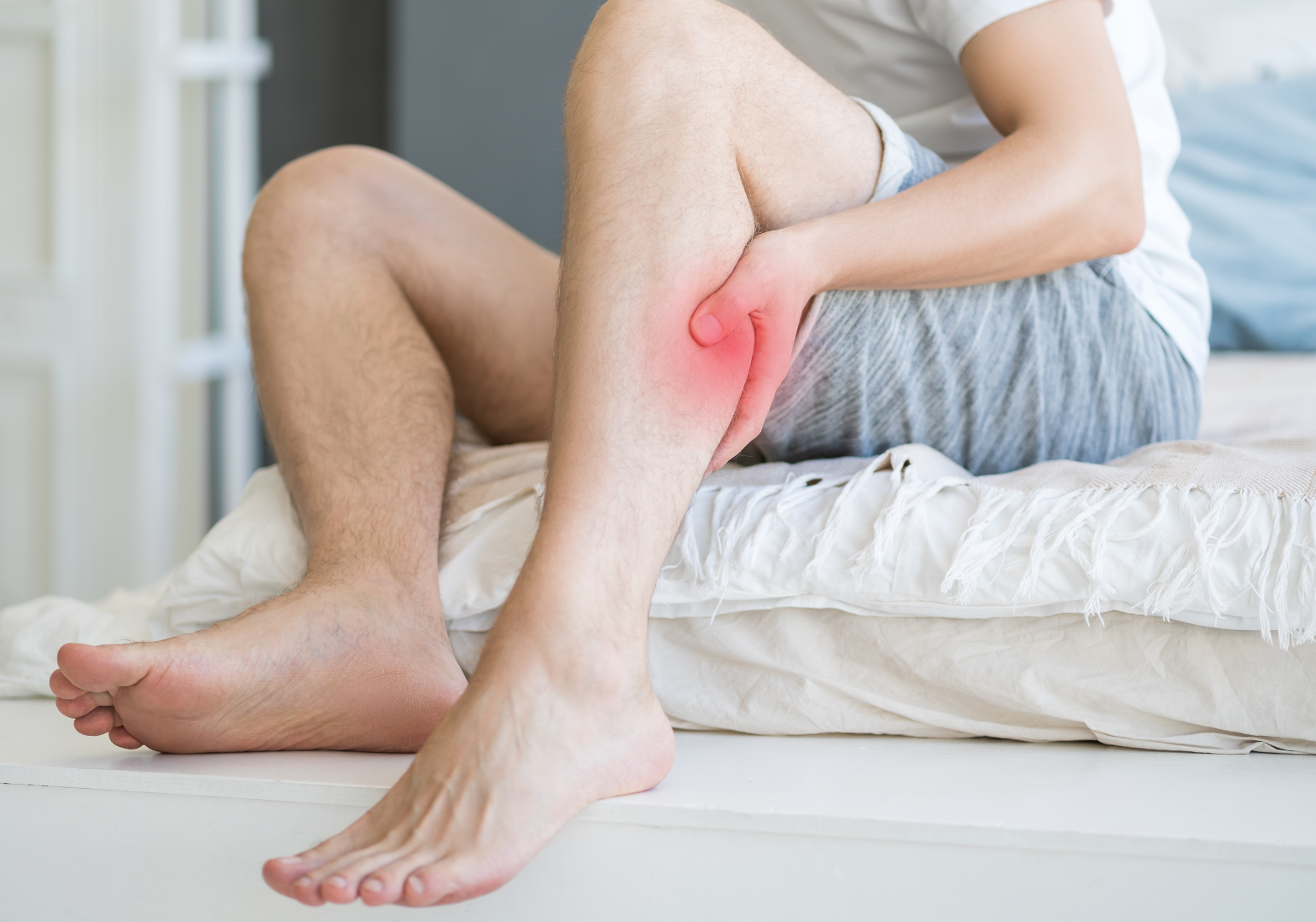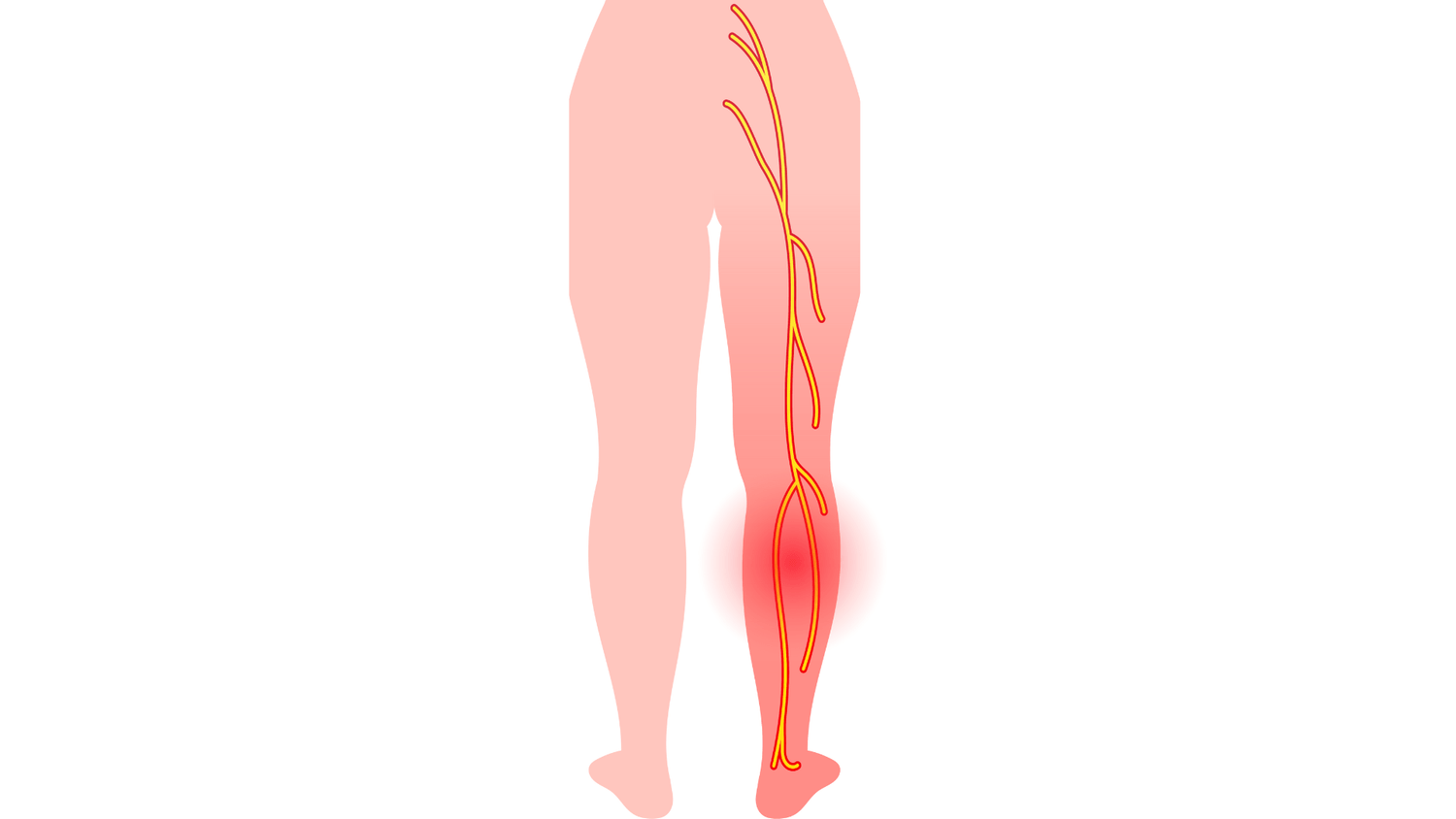Understanding Sciatica and Calf Pain: What You Need to Know

Have you ever felt a sharp twinge running from your lower back all the way down to your calf? Sciatica and calf pain can be a troubling duo, causing discomfort that disrupts daily activities. These pains often arise from issues with the sciatic nerve, the body's longest nerve, which makes its way from the spine down to the legs. When this nerve gets irritated or compressed, it can lead to sciatic nerve pain in the calf and beyond. Understanding calf sciatica is crucial for anyone who struggles with persistent leg pain. In this post, we'll break down what causes these symptoms and how to find relief so you can regain control and live comfortably again.
Understanding What Sciatica Is
Sciatica is a bit like a message from your body, often announcing a problem. It’s not a condition by itself but a symptom of an underlying issue. If you've been dealing with sciatica and calf pain, you're not alone. Millions experience this discomfort, which can feel like a distress signal from the longest nerve in your body, the sciatic nerve.
Definition of Sciatica
Sciatica occurs when the sciatic nerve, which snakes from your lower back down through your hips and legs, faces irritation or compression. This can manifest as a shooting pain that travels through your lower body. Imagine the sciatic nerve as a highway where traffic should flow smoothly. When there's a roadblock, discomfort arises. Sciatic nerve pain in the calf is one example of this disruption, often leading to unwelcome interference in daily movement and comfort.
Common Causes of Sciatica
Various factors can lead to the traffic jam in your nerve pathways known as sciatica. Here's what often triggers this uncomfortable situation:
- Herniated Discs: These occur when a disc in your spine slips out of place, pressing on the nerve roots. It's like when a pie spills over the edges.
- Spinal Stenosis: This condition results from the narrowing of spaces within your spine, placing undue pressure on the nerves.
- Injuries: Accidents or falls can lead to bone spurs or ruptured discs, both potential culprits for calf sciatica.
Understanding these causes is the first step towards navigating through the discomfort of sciatic nerve pain in the calf and rediscovering comfort.
Understanding Calf Pain
Sciatica and calf pain can be an unsettling mix. While the sciatic nerve pain in the calf is often related to issues that originate in the lower back, it's crucial to distinguish calf sciatica from other types of calf pain. Understanding the symptoms and common causes can shed light on the various reasons behind this pain.
Symptoms of Calf Pain
Calf pain can manifest in several ways, each telling a different story about what's happening in your body. Recognizing these symptoms is the first step in addressing the issue:
- Cramping: This can feel like a tight knot in your calf, sometimes so severe that it interrupts your activities. It's often sudden and may catch you off guard.
- Swelling: Noticeable swelling in the calf can be a sign of something more serious. This is your body's way of indicating a blockage or irritation.
- Soreness: An ache that lingers after physical activity or appears without a clear cause can suggest straining or overuse.
These symptoms can vary in intensity and duration, giving clues about whether you're dealing with a temporary annoyance or something more chronic.
Common Causes of Calf Pain
Several conditions can lead to calf pain, each with distinct characteristics. Here’s a look into the usual suspects:
- Muscle Strain: This occurs when the muscles are overstretched or torn, often from intense activity or without proper warming up. Imagine your calf muscles as a rubber band; overextending them can cause snapping pain.
- Blood Clots: Known as deep vein thrombosis (DVT), this condition can provoke sharp pain and swelling. It requires immediate attention, as it may lead to serious complications.
- Vascular Issues: Conditions affecting blood vessels, such as peripheral artery disease, can diminish blood flow to the legs, resulting in persistent calf pain.
Understanding these causes underscores the importance of consulting a healthcare provider if you experience consistent calf pain, as it could signal an underlying health concern.
The Relationship Between Sciatica and Calf Pain
Experiencing calf pain alongside sciatica can be frustrating, leaving many wondering how these two are connected. Sciatica, stemming from irritation or compression of the sciatic nerve, presents itself in numerous ways, often taking a detour down to the calf. It's like the nerve sends an uninvited guest to crash the party in your leg, causing pain and discomfort.

Sciatic Nerve Pain in Calf
The sciatic nerve, as it travels from the lower back through the buttocks, and down to the legs, can send ripples of pain right into the calf. This occurs when pressure or irritation affects the nerve, causing signals of pain to journey down its length. It’s a bit like a domino effect where the initial push—whether a slipped disc or some other injury—cascades down the line.
Calf pain specifically can feel sharp or burning and usually strikes one leg. Here’s how it typically manifests:
- Localized Calf Pain: Although originating from the back, the discomfort can concentrate in the calf, causing noticeable pain during activities like walking or standing.
- Radiating Sensations: People often describe it as a burning sensation, moving down from the buttock to the leg, akin to an electric jolt.
Understanding this can help demystify why your calf feels like it's shouldering some of the sciatic burden.
Calf Sciatica Symptoms
Recognizing the symptoms of calf sciatica is essential for effective management and treatment. Those suffering from sciatica and calf pain know all too well how it can impact daily life.
Common symptoms include:
- Numbness or Tingling: This isn’t just a pins-and-needles sensation from sitting awkwardly; it’s a persistent tingle that can precede or accompany pain.
- Muscle Weakness: You might notice your calf feels weaker, making it challenging to carry out simple tasks like climbing stairs or lifting your heel.
- Stabbing Pain: Sudden, sharp pain akin to a cramp can occur, often exacerbated by sudden movements or changes in posture.
These indicators can help differentiate calf sciatica from other types of leg pain. Awareness of these symptoms can signal when it's time to seek medical advice or start therapeutic measures.
Diagnosis of Sciatica and Calf Pain
Identifying the root of sciatica and calf pain is essential for effective treatment. Proper diagnosis involves evaluating symptoms, medical history, and sometimes imaging tests. Understanding these steps can guide those experiencing sciatic nerve pain in the calf toward appropriate relief.
Medical History and Physical Examination
A thorough medical history review is the first step in diagnosing calf sciatica. Your doctor will ask about prior injuries, existing health conditions, and the type and location of your pain. This conversation helps piece together your pain puzzle, shedding light on potential causes.
During a physical examination, doctors assess your spine, legs, and reflexes. They might perform a straight leg raise test to see if your symptoms align with sciatica. This simple movement can reveal much about nerve irritation and help pinpoint the source of discomfort.
Physical exams are crucial. They offer immediate, hands-on insights into how your body responds to certain movements, crucial for differentiating calf sciatica from other conditions.
Imaging Tests and Examinations
When symptoms persist, imaging tests may be necessary. These tests provide a clearer look inside your body, helping doctors confirm the diagnosis of sciatica and calf pain.
- MRI (Magnetic Resonance Imaging): This powerful tool creates detailed images of your spine and nerves. It is especially helpful for identifying herniated discs or spinal stenosis, common causes of sciatic nerve pain in the calf.
- X-rays: While X-rays primarily show bone structures, they can reveal bone spurs or fractures affecting the sciatic path. They’re a quick and accessible way to rule out obvious skeletal issues.
Both MRIs and X-rays serve as valuable diagnostic tools. When your pain refuses to relent, these tests can provide the answers you need, guiding your treatment path.
Accurate diagnosis is a critical step towards managing and mitigating the distress caused by sciatica, ensuring that those suffering from calf sciatica can take targeted steps toward comfort and recovery.
Treatment Options for Sciatica and Calf Pain
Managing sciatica and calf pain effectively often requires a combination of treatments. The approach varies based on the severity and underlying causes of the pain. Whether you're dealing with mild discomfort or more intense symptoms, understanding your options can guide you toward relief.
Conservative Treatments
Conservative or non-surgical methods are usually the first line of defense against sciatica and calf pain. These treatments focus on relieving pain and improving mobility without the need for invasive procedures.

1. Physical Therapy: Engaging in a targeted exercise program tailored by a physical therapist can work wonders. They guide you through stretches and exercises that strengthen the core and back muscles, reducing pressure on the sciatic nerve. Think of it as a workout plan specifically designed to keep your nerve pathways clear and pain-free.
2. Medications: Over-the-counter pain relievers, such as ibuprofen or acetaminophen, can help manage inflammation and discomfort. For more severe pain, doctors might prescribe medications like muscle relaxants or anti-inflammatory drugs. These act as temporary relief measures, calming the storm while you pursue longer-term solutions.
3. Lifestyle Changes: Sometimes, the simplest changes make the most significant impact. Maintaining a healthy weight, practicing good posture, and avoiding prolonged sitting can prevent sciatic nerve pain in the calf. Daily habits, like walking or stretching regularly, keep the sciatic "highway" free from blockages.
Surgical Treatments
In some cases, conservative methods might not suffice, especially if sciatica and calf pain persist or worsen. Here, surgical treatments become a consideration.
Surgical intervention is typically reserved for severe cases, such as when a herniated disc significantly compresses the nerve, leading to persistent calf sciatica or loss of function. Let's demystify when surgery might be on the table:
- Persisting Pain: If pain continues despite several months of conservative treatment, surgical options may be explored.
- Nerve Damage Risk: Surgery might be necessary if there is evidence of nerve damage, such as significant weakness or severe numbness.
- Loss of Bladder/Bowel Control: Urgent medical attention is required if sciatica affects bowel or bladder control, indicating severe nerve compression.
Procedures like microdiscectomy or laminectomy aim to remove the source of nerve pressure, offering relief. While surgery carries risks, it can also provide a renewed lease on life for those struggling with relentless sciatic nerve pain in the calf.
Preventing Sciatica and Calf Pain
Experiencing sciatica and calf pain can feel like a debilitating experience, affecting not only your mobility but also your overall quality of life. The good news is that with the right strategies, you can take proactive steps to prevent these issues before they start. By focusing on lifestyle modifications and proper ergonomics, you can significantly reduce the risk of encountering this discomfort.
Lifestyle Modifications
One of the most effective ways to ward off sciatica and calf pain is by making changes to your daily routine. Here are a few practical modifications you can implement:
- Exercise Regularly: Engage in activities like walking, swimming, or cycling that keep your body moving without putting too much strain on your back and legs. Regular exercise strengthens muscles, enhancing support for the spine.
- Watch Your Posture: Good posture is critical. Whether you're standing, sitting, or walking, align your spine naturally. Imagine a string pulling you upward from the top of your head—this helps maintain your natural curve.
- Stay Flexible: Incorporate stretching into your daily routine to maintain flexibility. Yoga or Pilates can be beneficial exercises that promote both flexibility and core strength, essential for preventing sciatic nerve pain in the calf.
- Maintain a Healthy Weight: Excess weight can put undue pressure on the spine, increasing the risk of sciatica. Opt for a balanced diet rich in fruits, vegetables, and lean proteins to support weight management.

Making these lifestyle adjustments can act as a powerful shield against unnecessary calf pain and improve your overall well-being.
Ergonomics and Workstation Setup
In our modern world, many spend hours hunched over computers, a habit that can trigger or exacerbate sciatic nerve pain. Implementing ergonomic principles in your workstation setup can prevent nerve compression and promote comfort.
- Adjust Your Chair: Your office chair should support the natural curve of your spine. Keep your feet flat on the floor and your knees at hip level. Consider using a lumbar roll if your chair lacks adequate back support.
- Monitor Positioning: Position your computer screen at eye level to avoid neck strain. Your monitor should be an arm’s length away, helping reduce the need to lean forward or squint.
- Keyboard and Mouse Placement: Keep your keyboard and mouse close enough that your arms remain relaxed at your sides, with elbows bent at about a 90-degree angle to minimize strain.
- Take Regular Breaks: Stand, stretch, and walk around every 30 minutes to facilitate proper circulation and relieve pressure on your body. Even a brief pause can help ward off calf sciatica symptoms.
By optimizing your workspace and incorporating these ergonomic practices, you create an environment that supports spinal health and helps prevent sciatica and calf pain. Implement these strategies not just at work, but also when setting up home offices or study spaces to maintain holistic body health.
Conclusion
Sciatica and calf pain can disrupt life, making simple tasks daunting. Recognize the symptoms of sciatic nerve pain in calf and calf sciatica to manage these conditions effectively. Understanding the connection between back issues and calf discomfort is key to recovery.
Several treatment options exist, ranging from physical therapy to surgical interventions. Adjusting lifestyle and work habits can also mitigate pain and prevent future issues.
Consult healthcare professionals for a tailored approach if you experience symptoms. Don't suffer in silence; take action to regain your quality of life.

You Can Fix Your Back...
You Just Need The Right Program
- Reduce your sciatic pain in days, not weeks.
- No more endless doctor visits—take control at home.
- Empower yourself with a program backed by real results.
- 2024 Sciatica Self Treatment / Back Pain Self Treatment














